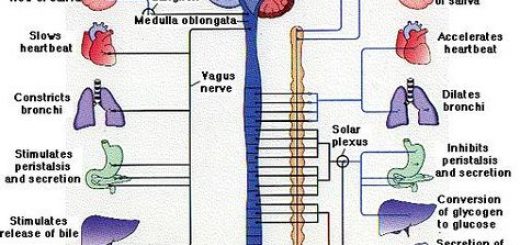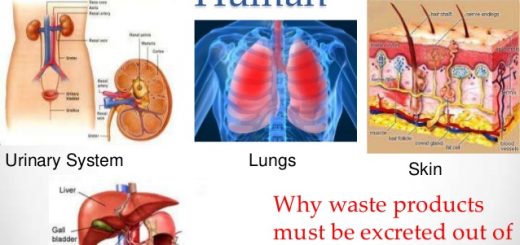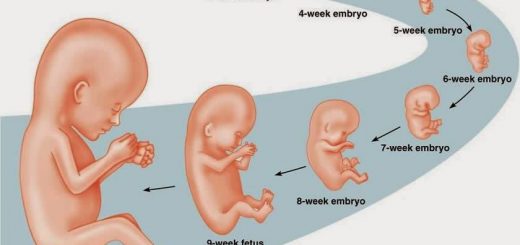Reproduction in flowering plants, Structure and functions of the flower
The flowering plants are a large group of seed plants called Angiospermae, as their seeds develop within a pericarp, They are common in various habitats and vary in size from small herbs to giant trees, The flowering plants reproduce by a specialized organ which called the flower.
Flower
The flower is the reproductive organ in flowering plants and it is a short stem whose leaves are modified to form the various floral parts, A Bract is a leaf that forms its axil the flower emerges, It varies in shape and colour from one plant to another ( scale, green ……… ).
The flower may be:
- With a bract or without a bract.
- Stalked (carried on a pedicel) or Sessile (not carried on a pedicel).
Origin of the flowers
Solitary flowers: these may be Apical, so that it stops the growth of the stem as in the tulip flower, or Axial which doesn’t stop the growth of the stem as in the Petunia flower.
Grouped flower: Flowers arise grouped on the floral axis in various aggregations which are called inflorescences as in the flower of bean and manthur, Inflorescence is a group of flowers on the floral axis in various aggregations.
Structure of the flower
The typical or complete flowers (hermaphrodite) such as beans, apples, onions and Petunia has four floral whorls, where the leaves of each whorl alternate with those of the next whorl as follows:
The Calyx (outer whorl of the flower) consists of green leaves that are called sepals, It protects the inner parts of the flower against drought or rain, or wind.
Corolla (which follows the calyx from the inside) consists of one row or more of coloured leaves called petals, It protects the floral sexual parts, and It attracts insects for the occurrence of the pollination process.
Androecium (flower male organ) consists of numerous leaves called stamens, where each one of them consists of a filament that carries an apical anther, anther contains four sacs of pollen grains, It produces the pollen grains (male gametes).
The gynoecium (flower female organ and lies in its centre) produces the ovules (female gamete), It consists of one carpel or more that may fuse or remain separated, where each one of them consists of:
- Ovary: the swelling base of the carpel and contains the ovules.
- Style: a thin neck that attaches over the ovary and ends with the stigma.
- Stigma: a sticky disc where the pollen grains adhere.
In the flowers of most monocotyledon plants such as tulip and onion, the leaves of the calyx are difficult to be differentiated from those of the corolla, and so the two outer whorls are called perianth.
Functions of the flower
The flower performs its functions in reproduction for the species continuity and this requires the following:
- Pollen grains formation.
- Ovules formation.
- Pollination and fertilization.
- Fruits and seeds formation.
The importance of flowers lies in their role in plant reproduction. Flowers are the site where fertilization occurs, which is the process by which a pollen grain containing a sperm cell fuses with an ovule containing an egg cell. After the fertilization process, the ovary of the flower develops into a fruit that contains seeds, The seeds can then germinate and grow into new plants.
In addition to their role in reproduction, flowers also play an important role in ecosystems. They provide food and habitat for pollinators, and they can also help to improve soil quality. Flowers also add beauty to our world and play an important role in human culture.
Pollen is transferred through a process called pollination. Pollination can happen in two ways:
- Self-pollination: This occurs when pollen from a flower lands on the stigma of the same flower or another flower on the same plant.
- Cross-pollination: This occurs when pollen from one flower is transferred to the stigma of a flower on a different plant. This is the preferred method of pollination as it leads to greater genetic diversity.
After successful pollination, fertilization occurs. Fertilization is when a pollen grain fuses with an ovule in the ovary, which triggers the development of a seed. The ovary then ripens into a fruit, which protects the seeds and aids in dispersal.
Flowers are essential for plant reproduction. Their colorful petals and fragrant scents attract pollinators, which transfer pollen between flowers, fertilizing the ovules and producing seeds. These seeds then disperse and germinate into new plants, ensuring the continuation of the species.
Pollen grains formation
If you examine a T.S. in a mature anther of a large-sized stamen as in the lily plant, you find that the anther consists of four sacs of pollen grains where the pollen grains are formed as the following:
- During flower development and before the formation of pollen grains, these sacs are full of large-nucleated diploid cells (2n) called the mother spore cells.
- Each cell of these mother spore cells divides meiotically, forming four haploids (n) cells called microspores.
- The nucleus of the microspore divides mitotically into two nuclei, where one of them is called the tube nucleus and the other is called the generative nucleus, therefore the pollen grain is formed, then its wall becomes thick for its protection.
- The anther becomes mature and the separating wall between each two adjacent pollen sacs degenerates, then the sacs open and the pollen grains become ready for dispersal.
Ovules formation
During the formation of pollen grains in the anther, parallel changes occur in the ovary as the following:
The ovule starts to appear as a simple swelling on the interior wall of the ovary and it contains a large mother spore cell (2n).
During the ovule growth: A funicle develops which connects the ovule with the ovary wall and through which the nutrients reach it, Two integuments develop which surround the ovule completely, except at a minute hole called the micropyle through which the ovule is fertilized.
The mother spore cell (2n) divides inside the ovule meiotically, giving a row of four haploid cells (n), Three of these cells degenerate and the fourth remains and grows rapidly, forming the embryonic sac which is surrounded by a nutritive tissue called the nucellus, Inside the embryonic sac, many stages occur as follows:
- The nucleus divides mitotically three times, giving 8 nuclei, where each of four of them migrates to one pole of the embryonic sac.
- From every four nuclei, one nucleus moves to the centre of the embryonic sac which is called the two polar nuclei (embryonic sac two nuclei).
- Each nucleus of the remaining three nuclei at each of the embryonic sac poles becomes enveloped by some cytoplasm and a thin membrane, forming distinct cells.
- The middle cell of the three cells that are close to the micropyle grows to become the egg, while the two side cells are called synergids and the three cells that are distant from the micropyle are called the antipodal cells.
The ovule becomes ready for fertilization.
Asexual & sexual reproduction in plants, Pollination & Stages of fertilization process in plants
Alternation of generations, Life cycle of malaria parasite & Life cycle of a fern plant
Pollination, Fertilization, Seed and Fruit formation in flowering plants



